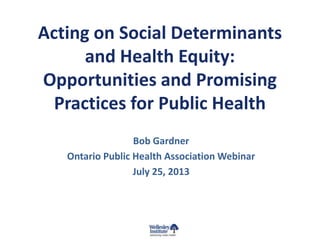The document discusses systemic health inequities in Ontario, emphasizing that those with lower income and education levels tend to have poorer health outcomes. It highlights the need for comprehensive health equity strategies, community action, and cross-sector collaboration to address these inequities by targeting the social determinants of health. Additionally, it outlines the importance of involving diverse community voices in public health planning to ensure equitable access to health services and resources.








































